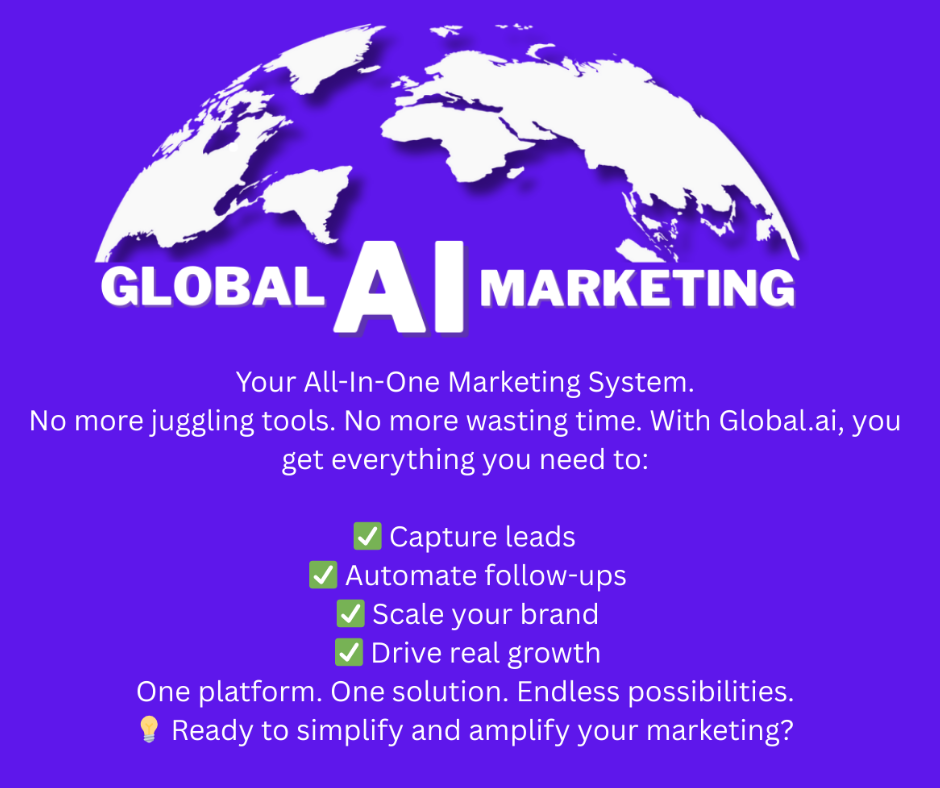The Power of Focus in Hard Times — How to Recalibrate, Regenerate, and Rebuild Together

“In the middle of difficulty lies opportunity.” — Albert Einstein
We are living in a time where it feels like everywhere you turn, there’s a new challenge to face. The economy is uncertain. Markets are volatile. Employees are exhausted. Leadership teams are stretched thin. Families are navigating personal and financial storms. Faith is being tested. And in the midst of all this, there’s a lingering question on the minds of so many:
“How do I stay focused and keep moving forward when everything around me feels like it’s falling apart?”
Today, I want to address this head-on. Whether you’re leading a company, managing a household, building a brand, or just trying to stay steady in your personal life — this message is for you. Because the truth is, storms will come. And your ability to remain focused, recalibrate your path, and rebuild with intention is what separates those who survive from those who thrive.
Why Focus Matters Most in Hard Times
Focus isn’t just a productivity tactic — it’s a survival skill. In difficult seasons, the natural tendency is to become reactive. Fear, anxiety, and uncertainty creep in. You start chasing fires instead of working your plan. You question your decisions. You withdraw from your team. Communication breaks down. Progress stalls.
But the businesses, families, and leaders that endure hard times don’t do so because life spared them from adversity. They endure because they made focus a discipline, not a feeling.
Focus gives you:
✅ Clarity amid chaos
✅ Direction when everything feels aimless
✅ A reason to keep moving when motivation is gone
✅ A way to rally your people around a purpose bigger than the current problem
And that’s what we all need right now — to regroup, take inventory, recalibrate the journey we’re on, and reestablish connection with the people walking beside us.
Step 1: Take Honest Inventory
You can’t recalibrate what you haven’t first measured.
Before you plan the next move, you must stop and assess exactly where you, your business, your family, and your team are today. Most people avoid this because it’s uncomfortable to admit how far off track things may have gotten. But honesty is the birthplace of breakthrough.
Ask yourself:
- Where are we financially, emotionally, and operationally right now?
- What systems have broken down?
- What relationships have grown distant?
- What priorities have been neglected?
- Where have I personally lost focus?
- What beliefs am I carrying that are no longer serving me or the team?
Action: Make time this week to write these answers down. Get them out of your head and onto paper. Review them with trusted advisors, your leadership team, or a mentor. This is not about blame — it’s about clarity.
Step 2: Recalibrate the Journey
Once you see where you really are, you can plot a new course.
In uncertain times, recalibration is not a luxury — it’s a necessity. The road you started down might no longer be the road that gets you to your destination. Markets shift. People change. Priorities evolve. And so must your plan.
Here’s how to recalibrate effectively:
- Simplify your focus. Narrow down to the 2-3 most critical outcomes that will stabilize and strengthen your foundation right now. Stop chasing too many things.
- Reset team roles and expectations. If people are confused or overloaded, they can’t perform. Clear communication and adjusted responsibilities realign the mission.
- Identify new opportunities. Every adversity reveals needs in the marketplace, within your team, and inside your own life. Look for them.
- Let go of what no longer fits. Certain offers, habits, relationships, or routines made sense a year ago. They might not anymore. Be willing to pivot.
Action:
Host a recalibration meeting this week with your inner circle or leadership team. Lay out the inventory, address the realities, and design a revised roadmap for the next 60–90 days. Don’t focus on the year ahead — focus on stabilizing and strengthening now.
Step 3: Build Communication & Support Structures
When things get hard, people tend to retreat inward. Leaders isolate. Employees get quiet. Families avoid tough conversations. But this is when communication matters most.
You need open, frequent, and honest conversations.
✅ Share where the company or team stands.
✅ Acknowledge the challenges.
✅ Invite input and feedback.
✅ Celebrate small wins.
✅ Check on each other’s well-being, not just productivity.
✅ Reestablish the mission and why it still matters.
Action:
Schedule recurring check-ins with your team, your family, and your close network. Not just about tasks, but about people’s mental and emotional state. Build a support net strong enough to carry the weight of what’s ahead.
Step 4: Develop Micro-Strategies for Rebuilding
Big master plans feel overwhelming in uncertain times. What you need are small, intentional, strategic moves that rebuild confidence, cash flow, momentum, and morale.
Consider implementing micro-strategies like:
- Focused 14-day cashflow improvements
- Revamping one broken system at a time
- Retargeting one neglected client segment
- Launching a single new service, not five
- Re-engaging one key partner or referral source
- Resetting personal habits (sleep, nutrition, reading, prayer)
Each small win compounds. When you string together micro-victories, you create tangible momentum. That’s how you rebuild.
Action:
Create a 30-day micro-strategy list for yourself and your business. Assign simple, achievable moves you can act on immediately. Track them daily.
Step 5: Regenerate Energy & Faith
Let’s be honest — you’re probably tired. Exhausted from carrying the weight of your business, your responsibilities, your people, and your own worries.
That’s why regeneration is not optional. Leaders and teams that don’t make space to restore their energy and faith eventually burn out and break down.
Key practices for regeneration:
- Unplug for short windows. Step away from the noise to think clearly.
- Protect sleep like a business asset. Fatigue kills good judgment.
- Move your body daily. It resets stress chemicals.
- Stay in faith. Prayer, scripture, worship, and reflection rebuild your spirit.
- Reconnect with your personal “why.”
Remember who and what you’re fighting for.
Action: Make a personal regeneration plan this month. Block time for rest, reflection, and recovery. Encourage your team to do the same.
Final Thoughts: The Storm Will End — But Who You Become During It Matters More
I don’t know what you’re facing right now. Maybe it’s financial strain, team challenges, personal battles, or market pressures. Maybe it feels like you’re on the verge of losing everything you’ve built.
I get it. I’ve lived it. And I promise you this — you have more in you than you realize.
The storm you’re in won’t last forever. But the habits you build, the relationships you strengthen, the focus you maintain, and the faith you hold onto will determine what’s waiting for you on the other side.
Use this time wisely. Don’t waste it in fear or frustration.
Instead:
✅ Take honest inventory.
✅ Recalibrate your path.
✅ Strengthen communication.
✅ Execute micro-strategies.
✅ Regenerate energy and faith.
And walk forward, together, with intention.
If this message resonates with you, share it with someone who needs encouragement today. And if you or your business need help recalibrating your strategy, rebuilding your systems, or finding clarity in the chaos — reach out. Let’s build something stronger, together.
Stay strong. Stay focused. Stay faithful.
— Rene’ Manfre Founder | Manfre & Associates Consulting | What’s Your Passion Productions




